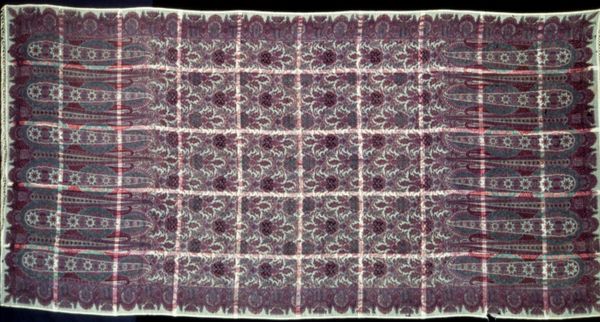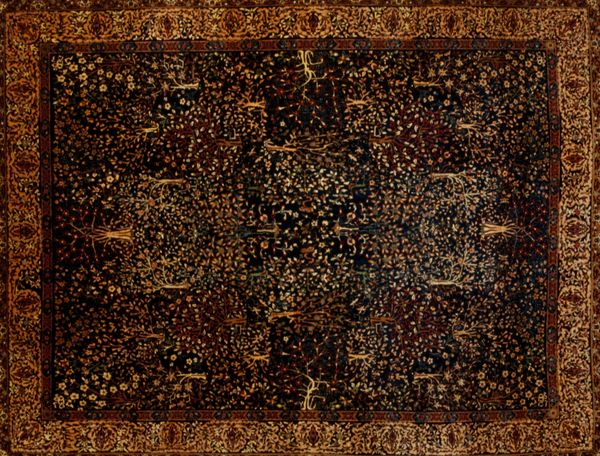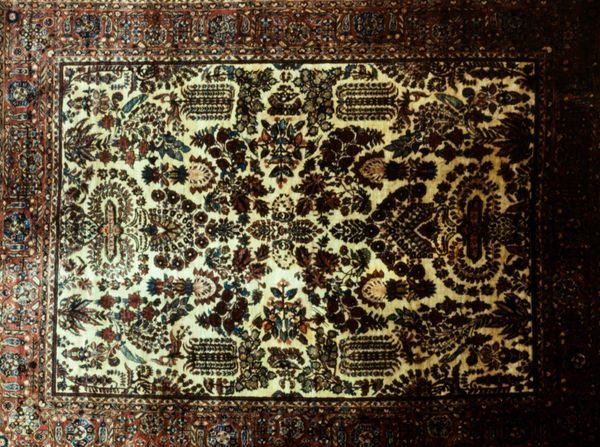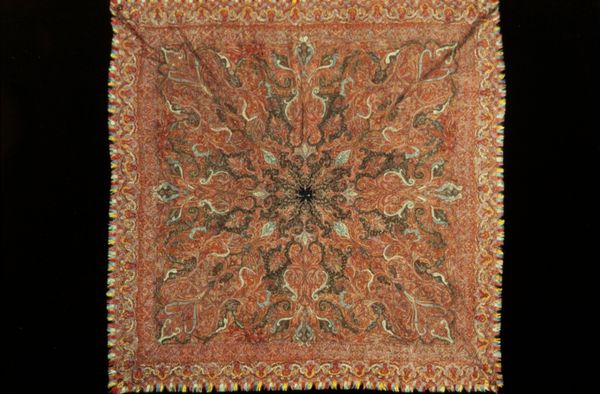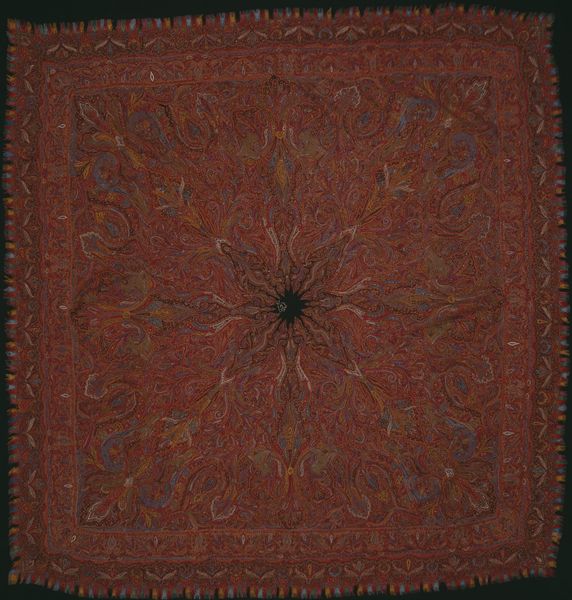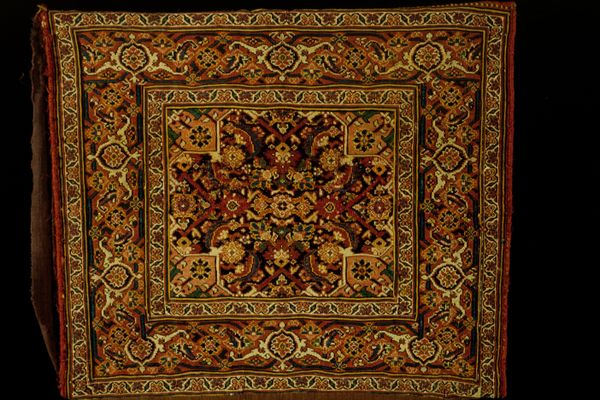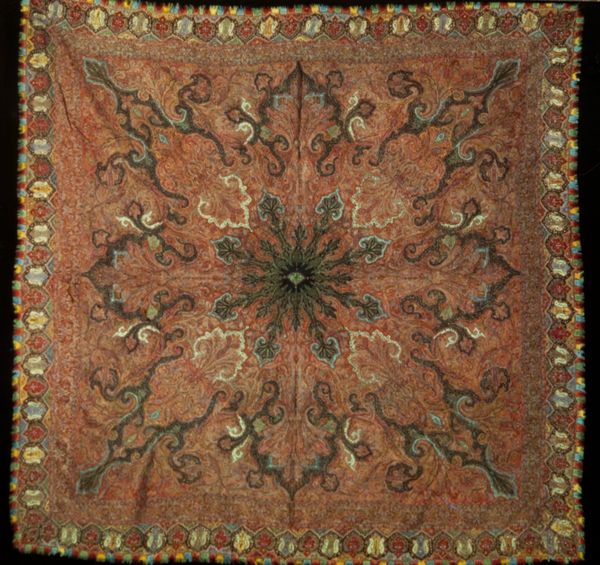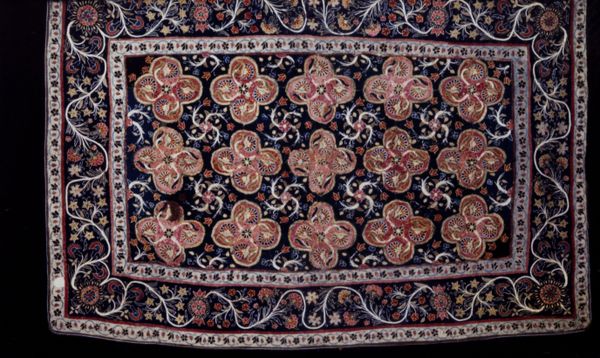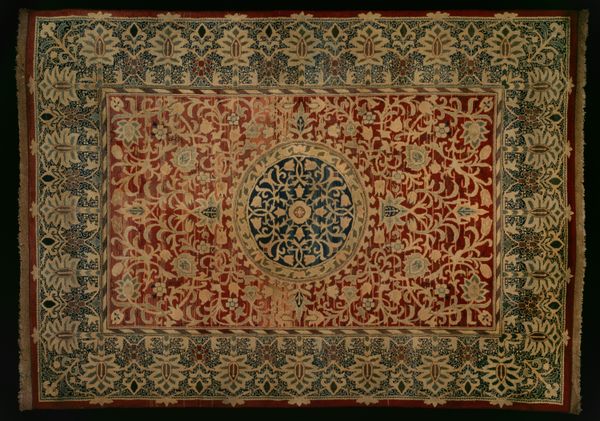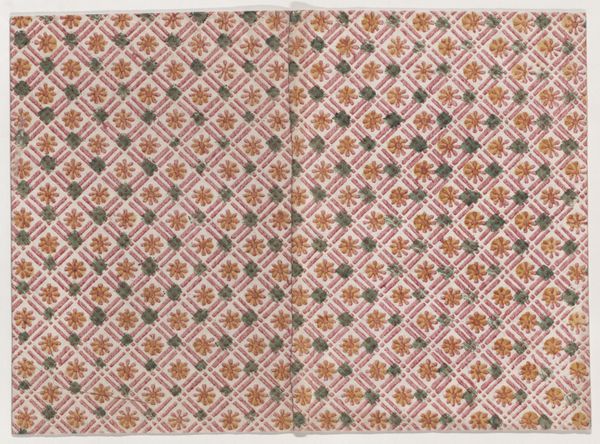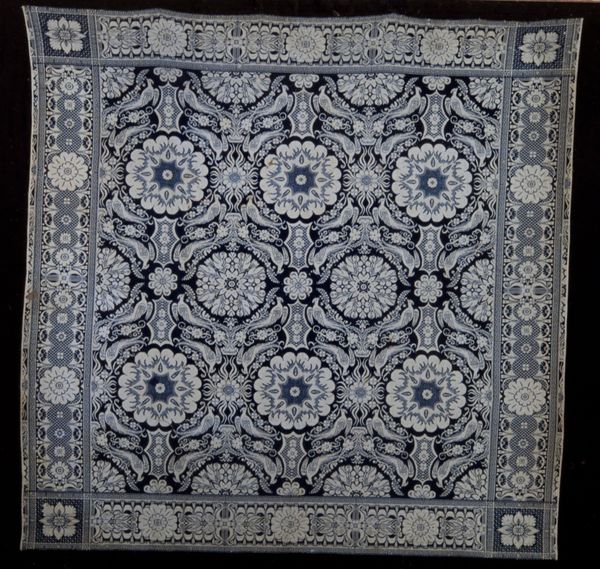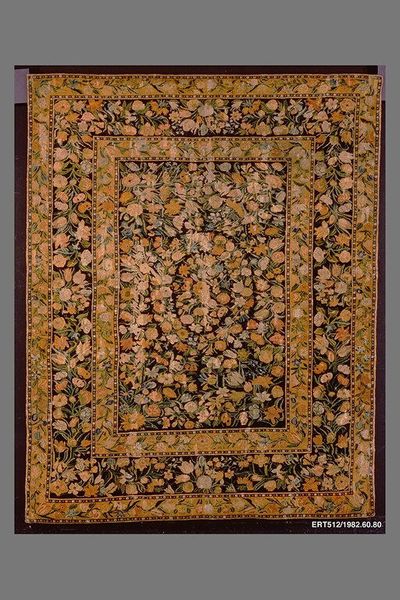
print, weaving, textile
# print
#
pattern
#
pattern
#
weaving
#
textile
#
geometric pattern
#
geometric
#
decorative-art
Dimensions: 272 × 252.5 cm (107 1/8 × 99 1/2 in.) Center repeat: 34.8 × 30.4 cm (13 3/4 × 12 in.) Border warp repeat: 38.7 cm (15 1/4 in.)
Copyright: Public Domain
Editor: We're looking at a Bedcover, dating to around 1804-1805. It's a textile piece at the Art Institute of Chicago. I'm struck by the sheer density of the pattern. How would you begin to unpack this visually? Curator: Let's start with the overall structure. Observe the interplay between the central field and the border. The central field is dominated by a repeating pattern, what seems to be small architectural elements and floral motifs. Note the limited palette. What do you think that restriction achieves in the piece? Editor: It does make the piece feel cohesive, rather than chaotic, despite the business of the pattern. But is the frame also repetitive and playing off this same effect? Curator: Exactly. The border contains more detailed figurative elements. By repeating this frame along the outside, what does this textile's formal structure achieve, beyond its functionality as a covering? Editor: It feels like it is supposed to be ornamental. The tight geometric and floral arrangements push what would be domestic to the level of display. Does the material influence our viewing experience? Curator: Certainly. The tactile nature of the textile invites closer inspection. Consider the technical skill involved in achieving such a complex design through weaving and printing. Is there any element of imperfection adding or detracting from the artwork? Editor: No, there is not that I can perceive. I see how examining these individual formal components provides a comprehensive understanding. Thank you. Curator: Yes. By analyzing the formal qualities, we gain insights into the artist's intentions, period practices, and what textiles may be expected to do. It’s a matter of carefully decoding what the medium tells us through line, shape, and color.
Comments
No comments
Be the first to comment and join the conversation on the ultimate creative platform.
